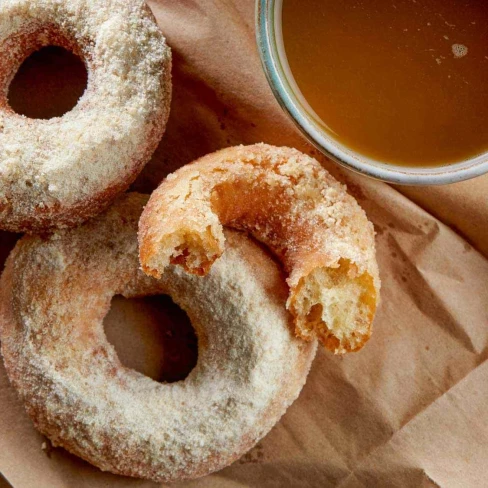The Best Apple Cider Doughnuts Recipe
This apple cider doughnuts recipe creates moist, spiced doughnuts with a crispy exterior. Made with apple cider and warm spices, these fried treats are then coated in a delightful apple-cinnamon sugar topping for the perfect autumn treat. Optional rose water and almond extract add a fragrant, floral note to the doughnuts.
Ingredients
Steps
Nutrition Facts
Ingredients
(Servings:
15)
Scale
Scale
For The Topping
Steps
View steps on seriouseats.com or by saving the recipe to your
personal library.
Register for free to start
saving recipes.
Nutrition Facts
Nutrition facts are based on 1 serving. If servings is not specified, 6 is assumed for the total
recipe.
-
Calories387kcal19%
-
Fat7g0%
-
Saturated Fat1g0%
-
Carbohydrates72g3%
-
Fiber3g0%
-
Sugar13g0%
-
Protein7g0%
-
Cholesterol0mg0%
-
Sodium273mg13%
Percent Daily Values are based on a 2,000 calorie diet.
